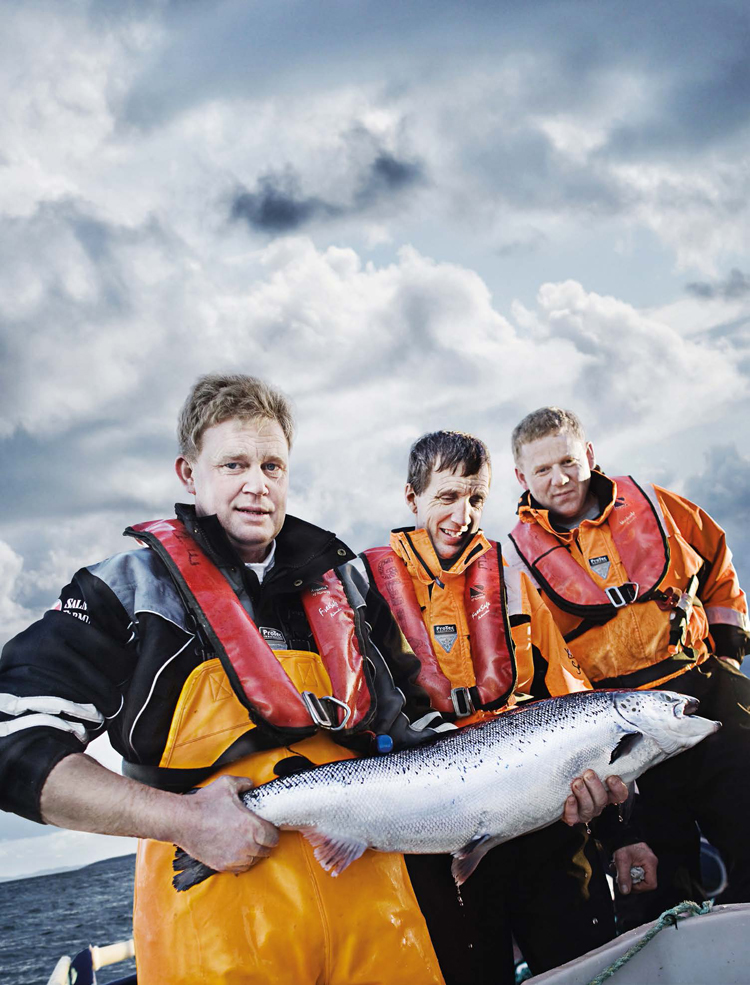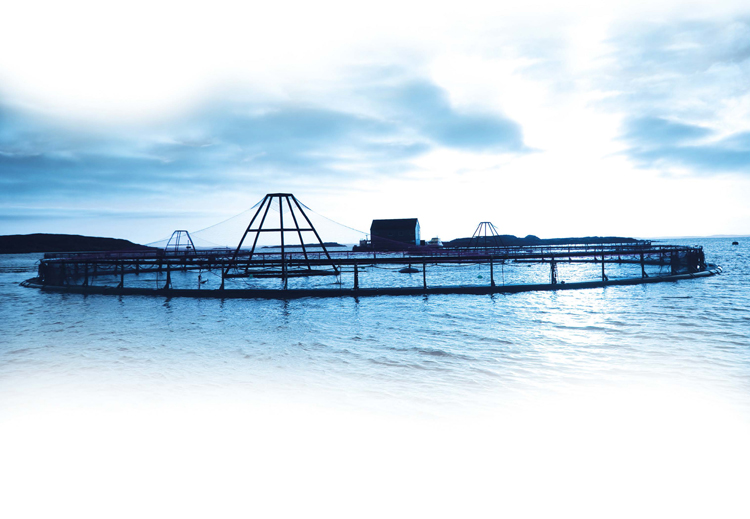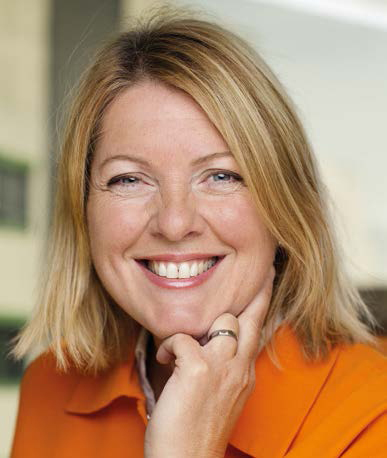Outstanding network-creating research, no large industrial groups, great raw material availability, a highly-developed ocean sector and a government that has placed economy decarbonisation at the heart of its growth plan for the coming years. This is an extreme summary of the bioeconomy in Norway, where, in December 2016, the government led by Erna Solberg presented its national strategy, setting a very ambitious objective: to increase turnover from €33 billion (the 2015 figure) to €110 billion by 2050, in the context of the Scandinavian country’s greater commitment to encouraging economic and employment growth, while reducing greenhouse-gas emissions and improving sustainable use of biological resources.
Norway, tackling the challenges of the constant decline of national gas and oil production and the need to reduce its CO2 emissions, is looking to the future with a firm focus on three key words: transition, innovation and competitiveness.
This transition is towards a gradually-decarbonised circular economy. This innovation involves using technological platforms which are able to use renewable biological resources in multiple sectors, efficiently and profitably. Competitiveness is achieved through cooperation between sectors and industries and the creation of a biobased product market.
“The bioeconomy’s contribution to a more circular economy, which is environmentally-friendly and low-emission, is an important prerequisite for public policy initiatives,” reads the “Familiar resources – undreamt of possibilities” strategy, published by the Ministry of Trade, Industry and Fishing and the outcome of the joint work of ten ministries. “In this sense – the government document continues – the internalisation of the negative effects on the climate and environment in product prices would be the most efficient way to promote the bioeconomy, in a context of holistic public policies which are coherent in every step of the value chain.”

The national strategy
The Norwegian government bioeconomy policy aims to raise production of energy and industrial foodstuffs and animal feed (from chemistry to textiles, to pharmaceuticals and materials) through sustainable use of biological raw materials which the country is rich in, supplied by the earth and above all the sea.
The Norwegian bioeconomy does indeed have a strong marine flavour. Just consider the fact that out of this metasector’s €33 billion turnover, around a third (€10 billion) came from the ocean sector and aquaculture. And this proportion is expected to increase, since the expected 2050 turnover is €60 billion (out of a total of 110). While, in 2015, the forestry, agrifood and bioindustry sectors contributed €15, 5 and 3 billion respectively, with an expected growth in 2050 reaching €27, 15 and 8 billion.
In a system which is greatly based on ocean resources, algae are a fundamental raw material for developing the bioeconomy. One of the most important industrial players in this sector is the company Seaweed Energy Solutions. Founded in 2006 with the objective of cultivating algae on an industrial scale in order to produce food, animal feed, biochemical products and energy, this Norwegian company is one of the largest in the European algae sector, also thanks to it purchased Danish company Seaweed Seed Supply in 2013.
Oslo is committed to creating a market for the new biobased products through correct information on public opinion; the introduction of a green public tenders system, accompanied by standards and labels: fair promotion of positive external effects generated by bioproducts; a plan for investing in mature companies not listed on the stock exchange, through public company Investinor, which currently manages a €470 million fund, and the consolidation of strategies funding innovation for startups set up by Innovation Norway. But it doesn’t stop there. Confirmation of the bioenergy initiative is expected through the bioenergy programme and Enova, a company founded in 2001 and run by the Ministry of Petroleum and Energy with the objective of reducing national emissions of greenhouse gases and developing new energy- and climate-related technologies, strengthening supply certainty.
The strategy considers intra-sectorial cooperation essential, entrusting the management of the action plan’s implementation to three organisations: the Research Council, the Industrial Development Corporation of Norway (SIVA) and Innovation Norway.
“Those of us working in research – claims Arvid Hallén, Chief Executive Officer of the Research Council – must adopt a broader and more interdisciplinary approach to the bioeconomy than we are currently applying. Working in a combination of different subject areas is beneficial for research. Many of our bioeconomy programmes already provide for funded projects mandatorily including partners from different fields and sectors.”
Oslo’s bio-flying
In January 2016, Oslo airport was the first to offer biofuel to all airline companies through its normal supply system. This was able to come to pass thanks to an agreement with Avinor, the public company owned by the Ministry of Transport and Communications which manages the country’s 46 national airports, and Air BP, British Petroleum’s aviation division.
“Norway is transitioning towards being a low-emission society. The initiative undertaken by Avinor and Air BP shows that the aviation sector wants to participate in this change.” These were the words spoken by Minister for Climate and the Environment, Vidar Helgesen, during the presentation of the agreement. “Biofuel is one of the few alternatives which we have which can contribute to significantly reducing greenhouse gases in aviation, providing that the biofuel is produced sustainably.”
“We are delighted to be able to offer biofuels at Oslo airport,” claimed Dag Falk-Petersen, Avinor CEO. “This is in line with that established regarding climate by both Avinor and the aviation sector.”
The objective – according to Air BP CEO, David Gilmour – is “to prove that airports can easily access biofuels using existing physical infrastructures. We expect this to increase interest and demand, not to mention contribute to biofuel’s sustainable future in the aviation sector.”
Some of the other companies participating in the project are Lufthansa, SAS and KLM, all willing to pay more in order to guarantee that biofuel can be offered at Oslo airport. The Norwegian government itself has lowered CO2 tax rates on national flights for the involved airlines.
The Avinor and Air BP initiative is in line with the ambitious environmental objectives set by the aeronautical industry: by 2050, to reduce emissions by 50% compared to the 2005 level. The European Union, on the other hand, inspires to introduce a use rate of 3.5% biofuel out of the total used for aviation by 2020.
Air BP receives fuel from Finnish company Neste Porvoo via SkyNrg, a broker specialised in biofuel supply. This is certified biofuel, produced from the Camelina plant. It contains no palm oil. “It is completely safe, just as safe as a fossil fuel,” ensured Air BP.
The key role of public research
Further proof of the importance that research has for Norway is the 2015 institution of the Norwegian Institute of Bioeconomy Research (NIBIO), one of the most important research institutes in the country. NIBIO comes under the ownership of the Ministry of Agriculture and Food and is the result of a merger involving the Norwegian Institute for Agricultural and Environmental Research (Bioforsk), the Norwegian Agricultural Economics Research Institute (NILF) and the Norwegian Forest and Landscape Institute (Skogoglandskap). It specialises in food, forestry and forest resources, plant health and biotechnologies, the environment and the climate, and statistics.
“Norway – explains Ernst Kloosterman, former Chief Executive Officer of the Norwegian Industrial Biotech Network (IBNN) – implemented national strategies for biotechnologies and ocean bioprospecting between 2000 and 2009. This facilitated the development of biotechnology platforms, excellent infrastructures and training for highly-qualified scientists. This is contributing greatly to the growth of the biotechnological, biobased industrial sector. There is great potential, since the country is rich in bioresources and highly-educated staff.”
Norway is not lacking in public policies which support the bioeconomy. There are financial incentives, measures for reducing financial risks, investments into know-how and knowledge (including education), programmes supporting the development and implementation of new knowledge and technologies in industry, technological platforms which support innovation, as well as plans for informing and educating society and potential interested parties on the positive social and economic impacts.
“Norway – Kloostermann continues – has several advanced biotechnology, biobased companies which are international leaders, but are not yet big enough to be able to finance new spin-outs and research programmes. However, it is from this absence of large national industries that the incentive to develop individual skills and public research derives, with collaboration between different subject areas and sectors that stimulate the most innovative development and industrial growth. Furthermore, Norway recognises the importance of international collaboration in terms of development.”

Relationships with Nordic countries
The Norwegian bioeconomy is significantly supported by its synergy with the nearby Nordic countries. Beginning with the work carried out by the Nordic Bioeconomy Panel, a transnational forum which deals with policies and strategies, formed in 2014 on the initiative of the ministers for cooperation of Norway, Denmark, Finland, Sweden, the Faroe Islands, Iceland and Greenland. Representatives of government agencies, research bodies, companies and civil society are members.
The Panel’s main task is to process strategy proposals and public policies which promote innovation and a sustainable bioeconomy. The Nordic strategy will arrive at the end of 2017 on completion of a journey beginning on 19 January 2017 in Copenhagen, where the Nordic Council of Ministers (the official intergovernmental body for cooperation between Nordic countries founded in 1971) and the Nordic Bioeconomy Panel brings together a number of stakeholders to discuss a context which the seven member countries share and which favours the development of the bioeconomy. This began with the analysis of 25 case studies successful in optimising resource efficiency and creating value.
“The bioeconomy – Hörður G. Kristinsson, chairperson of the Nordic Bioeconomy Panel, states – offers extraordinary opportunities for accelerating sustainable growth and development in Nordic countries and will be the world’s tool for achieving the United Nations’ sustainable development objectives. The 25 case studies are very different from one another and come from various industries. Analysis of their environmental, economic and social impact has allowed us to understand the regional bioeconomy’s features and identify some of the best Nordic practices in the sector. This information will be a fundamental element for the joint strategy.”
The four cornerstones of the Nordic bioeconomy have been identified around these actions: replace, update, circulate and collaborate. Replace materials deriving from fossil fuels and other sustainable materials with biological alternatives. Update, that is, create higher-value products and services using resources which come from across industry. Circulate, that is create an economy that uses waste and discards as raw materials and considers the whole system’s sustainability and regenerative capacity. Collaborate, in order to identify the initiatives where intersectorial cooperation is a key factor. The cases in this latter category include strategic public and private partnerships with the participation of industry, the authorities, and research institutes, as well as the communities which have set ambitious objectives for their transformation towards a sustainable, circular bioeconomy.
“These four cornerstones are the Nordic bioeconomy’s strong points, but above all they define a direction for sustainable change,” explains Liv la Cour Belling, project manager at the Nordic Council of Ministers.
The strategy will consider the different national approaches to the bioeconomy and will encourage increasing cooperation, sharing of knowledge and transfer of technologies beyond borders and among the different bioeconomy sectors.
The Norwegian cases
The Nordic bioeconomy document considers three case studies. The first stars TreFokus, a company with offices in Oslo that – through a network-based approach – associates multiple players involved in the construction sector (from constructors, to local authorities, to schools) in order to increase the use of wood-based materials. According to the Norwegian company, using wood-based solutions in constructions can reduce CO2 emissions by up to 50% compared to other building materials.
The second case regards the Exilva project set up by Borregaard, leading company in the production of biochemicals derived from lignin. In 2016, the project enabled the first industrial-scale establishment for the production of micro-fibrillated cellulose (MFC), with a capacity of 1,000 tonnes a year and completely fuelled by renewable energy. There are plans to develop advanced market segments for the use of MFC as an additive for adhesives, upholstery, cosmetics and chemical products for agricultural use. These products come 100% from renewable sources and aim to replace their petrol counterpart.
Finally, the third of the case studies is Biomega, Norwegian leader in the salmon market. Specifically, the company, whose offices are situated in Bergen, has developed a project that provides for using the inedible part of salmon (which was previously thrown back into the sea) to produce new bioproducts such as salmon oil and peptides for human and animal food.
“Familiar resources – undreamt of possibilities”, tinyurl.com/y7qyhu59
Norwegian Institute of Bioeconomy Research, www.nibio.no/en
Nordic Bioeconomy Panel, tinyurl.com/y7tgszgd

Interview with Sigridur Thormodsdottir, Head of Biobased Industries, Division Sustainability at Innovation Norway
by M. B.
In Norway We Have to Exploit Our Biomass More
Innovation Norway is the Norwegian Government’s most important instrument for innovation and development of Norwegian enterprises and industry. It has taken a proactive role in the effort of steering companies towards thinking and acting in a more sustainable way. Today, almost 30% of its total financial portfolio has an environmentally-focused profile. Renewable Matter interviews Sigridur Thormodsdottir, who is the Head of Biobased Industries, Division Sustainability at Innovation Norway.
Mrs Thormodsdottir, as far as you’re concerned, what are the strengths and weaknesses of the Norwegian bioeconomy?
“One of the strengths is Norway’s access to biomass, especially marine biomass, where we are only at the beginning of utilizing its potential. Norway has strong knowledge and competence within the bioeconomy, related to sustainable management and utilization of marine based bio-resources, animal and plant welfare. There are also some niche areas where Norway has a strong competence and industry in forestry. The weakness is the lack of industry base for full utilization of the biomass. Norway is good at production and harvesting of biomass but a large amount of the biomass is exported as a raw material, both fish and wood based resources. In Norway, we need to process and utilize more.”
How is Norway planning to support the development of the bioeconomy in the coming years?
“Norway has a new strategy on the bioeconomy which shall lead to increased value creation and employment, reduced emissions of climate gases and more efficient, profitable and sustainable use of renewable biological resources. All bio-sectors are addressed, with four prioritized areas: 1. Cooperation across sectors, industries and thematic areas. 2. Markets for renewable bio-based products. 3. Efficient use and profitable processing of renewable, biological resources. 4. Sustainable production and extraction of renewable biological resources.
“In the strategy, the government has asked the Norwegian Research council, Innovation Norway (supporting the industry and companies) and Siva (which facilitates innovation by developing, building and owning infrastructure for industry, startups and research environments) to make a common activity plan enhancing development of the bioeconomy. The plan shall facilitate a seamless system between research, innovation and need for infrastructure.”
Which are the policies you have now in your country to support the bioeconomy. And how is this interconnected with the circular economy?
“In addition to the strategy for bioeconomy, strategies and regulation concerning for example fisheries, agriculture and aquaculture do exist. To some extent, this can delay the development of the bioeconomy. It is also important to build and maintain competence in public system and within the institution that are implementing laws and regulations, in order to meet the rapid change and opportunities in the bioeconomy. Here, for example, I’m thinking of digitalization and use of big data in order to maximize utilization or efficiency of the biomass throughout the whole value chain. Another issue is the regulation regarding fertilizers from waste and waste water from the cities (see for example Urban Biocycles by Ellen MacArthur Foundation): the legislation and the operative institution and organization need to be able to meet the opportunities and the need. The bioeconomy strategy is pointing out the need for a national strategy for the circular economy (which is in process), pointing out that the bioeconomy is a part of the circular economy.”
Are there measures such as Green Public Procurement and carbon tax in the Norwegian policy system?
“There is a new regulation on public procurement focusing on innovation and development, where it is possible to address green/sustainable procurement. Carbon tax is more on a voluntary basis. That said, there are public measures enabling use of electric cars, and wood/wood based materials in public buildings.
According to the new strategy on the bioeconomy, developing your bio-potential will help unleash your national resources potential to spur future economic growth and job creation in Norway, reducing climate gas emissions. How is it possible to advance know-how and technology platform capable of using renewable biological resources from several productions and with application in several industries?
“It is clear that if you want to unleash the national resources potential to spur future economic growth and job creation, reducing climate gas emissions, you need first to make the strategic decision that this is the vision. For Norway the decision is if Norway wants to be a supplier of biomass/raw material or build an industry and supply more valuable products based on the biomass. We in Innovation Norway have as our vision that more of the resources should be processed in Norway.
“Almost 40% of the pulp wood (the part of the tree that cannot be used for making plank in the sawing mill) and approximately 80% of the seafood from Norway is exported very little processed. This is missed opportunities for making diversified industries, valuable jobs, economical welfare and sustainable development. When the decision is made, then the industries, the government and the universities need to cooperate. We need to develop and invest in the traditional industry value chains and create new ones. We need to look at the education system and work on the ‘mindset’ that today and yesterday solutions and business models are not necessarily the right ones for the future. We need also showcases with companies that have changed or developed their business models: ‘The core is killing you’ is also applicable in the bio-based industries.”
What is the role of Innovation Norway regarding the bioeconomy and the circular economy?
“We are supporting companies in their innovation, upscaling and investment process. We believe the most promising opportunities for Norwegian companies can be found in the area of green innovation. But other social challenges also require sustainable answers, for example within the healthcare sector. In the intersection between the public and private sectors, innovations can be created that can provide the basis for new business developments.”
What are the other bioeconomy players in Norway?
“If you mean companies, then it is Borregaard. I would also like to mention SalMar and Nutrimar, two Norwegian biomarine companies that are directly coupled to InnovaMar, the biggest and most efficient salmon processing plant in the world. We have also clusters like Legasea Ålesund, a global power centre for the production of sustainable marine ingredients that promote health, based on working up trimmings from fish processing, and biomass which is not used as food. And Heidner Hamar, which is the leading Norwegian bioeconomy cluster for innovations in sustainable food production, delivers technology and knowledge that contribute to a sustainable food production globally, and also works towards increased food production in Norway.”
How relevant is the relation with other Nordic countries?
“We consider cooperation with the Nordic countries important. We are already cooperating, but we would like to do even more. A part of the exported raw material is processed in the Nordic countries like Sweden and Denmark. For the marine area, cooperation with the west Nordic countries is the most relevant. For agriculture and forestry is the east Nordic countries more relevant. Denmark is both.”
Without the people on board, it’s really difficult to really de-carbonize. What is the perception of the bioeconomy by the Norwegian public opinion?
“The general public in Norway is interested and active in sustainable development, including the bioeconomy. Regarding the food, the Norwegian consumer has trust in the food industry: very low use of antibiotics and animal and plant health is very good in Norway. Bio-based materials like wood are also much used and part of everyday life. When discussing bio-based chemicals and materials that are possible drop-in for example in plastic, the consumer gets a little confused. They want to contribute, but the communication of what is good and what is bad is not consistent.”
Ellen MacArthur Foundation, Urban Biocycles, tinyurl.com/yapbwxuj
Borregaard, www.borregaard.com
Innovation Norway www.innovasjonnorge.no/en/start-page
www.innovasjonnorge.no/en/start-page



